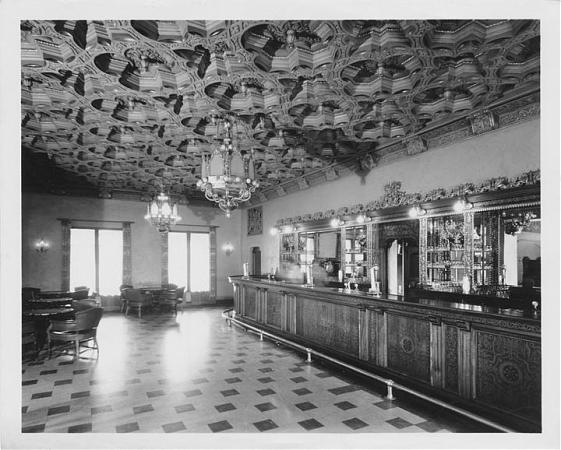Casino Tijuana Agua Caliente
Agua Caliente Casinos in Palm Springs, Rancho Mirage, and Cathedral City are open! Guests are required to wear a face-covering and face-coverings are available upon request upon entry. Casino capacity: We are operating at 50 percent capacity to ensure social distancing measures. The Agua Caliente Casino and Hotel opened in 22 June 1928 in the Mexican city of Tijuana, Baja California.It was a lavish resort that included a casino, spa, championship golf and tennis facilities, its own airstrip, and a lot of entertainment. Agua Caliente Casino Cathedral City 68960 E Palm Canyon Dr Cathedral City, California 92234 888.999.1995.
A brief history of the 'Monte Carlo en Tijuana' (and its fate) which opened in 1928
- A construction worker died Monday morning at the recently opened Agua Caliente Cathedral City casino. Jay Ayers, 41, of Temecula, was fatally injured at 5:20 a.m. Palm Canyon Drive.
- The new casino, the third property from the Agua Caliente Band of Cahuilla Indians, had a bit of a surprise opening. It announced that the doors were open via its social media accounts Tuesday night.

An orquesta típica serenaded diners at Tijuana’s Agua Calinente Hotel and Casino in 1928. Photo: Guy Sensor Landscape Photo, courtesy of San Diego History Center Photo Archive.
The Tijuana Agua Caliente Hotel and Casino
Casino Agua Caliente Tijuana

by Will Chandler
Built by three American sports promoters at a cost of over $1.5 million, Tijuana’s legendary Agua Caliente Hotel and Casino opened to the public on June 23, 1928. The enterprise was a spectacular success, thanks in part to its brilliantly staged development. A year’s advance press notices for the hotel were stoked by Caliente’s Phase 1 construction of a greyhound racetrack. The track opened on July 1, 1927, with record-breaking purse payouts that drew the racing sports world to Tijuana.
Known as the “Border Barons,” Caliente’s developers were Wirt G. Bowman (1874-1949, cattle rancher, capitalist and politician), James N. Crofton (1895-1968, rancher and sportsman)—both from Nogales, Arizona—and Baron H. Long (1883-1962, sports promoter and U.S. Grant Hotel owner). Bowman’s long friendships with northern Mexico’s politicians enabled rapid progress in Tijuana. Caliente’s contractor was Fernando F. Rodríguez, brother of northern Baja’s military commander and governor, Abelardo L. Rodríguez (1889-1967).
Named for its medicinal hot springs, the Agua Caliente resort complex included a therapeutic pool and spa, but its chief attractions for wealthy Americans were its luxurious gambling casino, greyhound races and elegant full-service cocktail bars. None of these entertainments were legal in California, and the resort’s location, less than three miles from the international border, was made even more accessible by transborder train service from San Diego to Caliente, and by twice-daily 12-passenger Ford Trimotor airplane flights from
Los Angeles and San Diego to its own airfield.
Casino Tijuana Agua Caliente
The hotel’s 300 guest rooms, private bungalows, lush gardens and superb food service guaranteed its popularity as a Hollywood getaway. Guests at the opening’s formal dinner included Al Jolson, Dolores del Rio, Charlie Chaplin, Sid Grauman, Raoul Walsh, Renée Adorée, Mabel Normand, Lupe Vélez, Jack Dempsey and United Artists’ president Joseph Schenck, who became the resort’s majority stockholder in 1932.
Casino Tijuana Agua Caliente Tequila
Surprisingly, the famously beautiful hotel was designed by fledgling architect Wayne D. McAllister (1907-2000) and his wife Corinne Fuller McAllister (1905-2001), better known for their midcentury-modern projects. Reported monthly casino and track receipts of $500,000 paid for rapid expansions of the hotel, a grass golf course, and, in 1929, a new $2.5 million racetrack and grandstand.
Even after the 1929 stock market crash, Caliente seemed destined for long-term success. Its pinnacle of glamor came with the Warner Bros. musical In Caliente, released May 25, 1935, and starring Dolores Del Rio and Pat O’Brien. But on July 20, incoming Mexican president Lázaro Cárdenas permanently revoked all gambling casino licenses, and the resort, then valued at $8 million, was abruptly forced to close at the height of its fame. The Caliente track was allowed to reopen, but the hotel was converted to a military school. ϖ